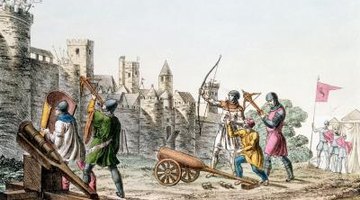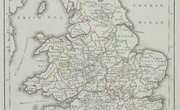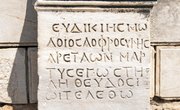The Hundred Years' War was an ongoing struggle between the English and the French during the 14th and 15th centuries over a number of issues, including legitimate claim to the French throne. Generations of English and French claimants to the crown were involved in the dispute, from approximately 1337 to 1453. At the Battle of Orleans in 1429, the French, led by Joan of Arc, defeated the English and drove them from most French territories. Following the Hundred Years' War, many English regarded French as the enemy's language. The status of the English language rose, and Oxford and Cambridge universities were founded. Although books were still hand-copied and expensive, literacy increased.
King Arthur and Sir Gawain
During the Hundred Years' War, the English seized on Arthur and adopted the Arthurian legends to define themselves, politically and in terms of religion. The late 14th century's "Sir Gawain and the Green Knight" offered a protagonist who, as a literary character, could be traced back to pre-conquest England. His name might be Welsh in origin. "Sir Gawain and the Green Knight" is constructed with an alliteration technique consisting of repeating sounds at word beginnings, a literary device that is uniquely English and not French in development. An example is the work's opening line, which reads "Sithen the sege and the assaut was sesed at Troye."
Piers Plowman
William Langland's allegorical poem "Piers Plowman" from this period features a prologue with a famous scene of a bell placed around a cat's neck. It's often considered symbolic of the fate of Richard II, 10 years old when he rose to the English throne. He was advised during his teen years by John of Gaunt, whose son Henry ultimately imprisoned Richard in the Tower of London. The image of John of Gaunt advising the young Richard pervades this era's literature. It also appears in politically themed poems including "Richard the Redeless" and "There Is a Busche That Is Forgrowe," as well as a short political allegory entitled "On the Times."
Chaucer
Geoffrey Chaucer began his landmark "The Canterbury Tales" in the early 1380s, a literary turning point in that he chose to write in English. "The Canterbury Tales" is typically considered the first great work of English literature. Chaucer's Middle English proved a viable language in which to write, alongside both French and Latin. Chaucer introduced approximately 2,000 new words into Middle English. Although it's likely they were everyday words in use in London in the 14th century, it is in Chaucer's works where they appear in written form for the first time.
An English Bible
In 1384, John Wycliffe published his Bible translation in English. At the time, this was regarded as an act of defiance or revolution, and the church banned the English translation. In spite of these difficulties, Wycliffe's Bible was a landmark English language work. By the late 14th and 15th century, the English language had evolved rapidly. It's not likely that even Chaucer would have understood the Old English that had evolved into his Middle English. In fact, Chaucer's Middle English is a rich English, and his work features the same themes that intrigue readers today: lust, humor, adventure and loss.
Related Articles
References
Writer Bio
Susie Zappia teaches humanities and research and writing courses online for several colleges. Her research interests include counterculture literature of the 1960 and instructional design for online courses and she enjoys writing about literature, art and instructional design. She holds a Master of Arts in humanities from California State University, Dominguez Hills and a Master of Science in instructional design from Capella University.











